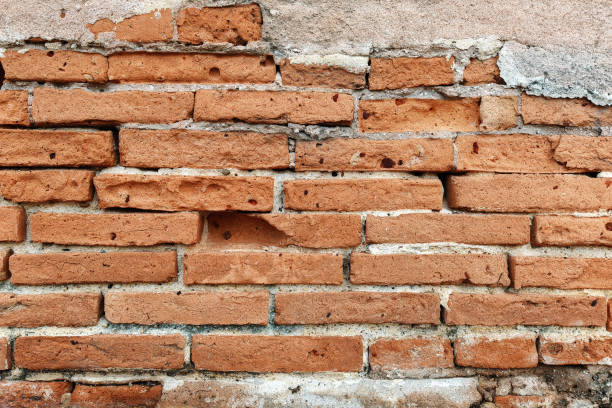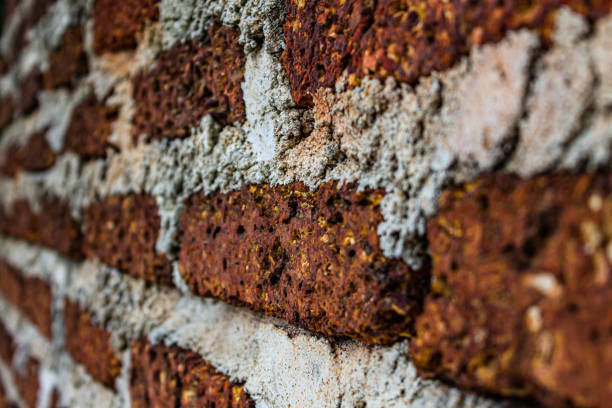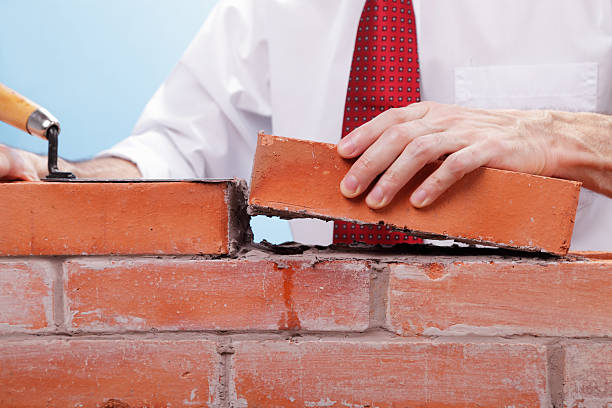Brickwork forms the backbone of countless structures, offering both aesthetic appeal and long-term durability. However, over time, environmental factors and improper maintenance can lead to spalling, a condition in which the face of a brick deteriorates and detaches.
Whether preserving an old heritage building or maintaining a modern home, understanding spalling brickwork and how to repair it is essential.
This comprehensive guide delves into the causes, effects, identification, detailed steps to repair spalling bricks and preventative measures to protect your masonry for years to come.
What is Spalling Brickwork?
Spalling brickwork occurs when the outer layers of bricks flake, crack, or crumble away. It is not just an aesthetic issue; if left unchecked, it can weaken the structural integrity of your building. Spalling is particularly common in older structures and regions with harsh weather conditions like freezing and thawing cycles.

Key Characteristics:
- Visible flaking or chipping on brick surfaces.
- Cracks running through the mortar or bricks.
- Loose or crumbling sections of masonry.
- Discoloration or damp patches indicating moisture infiltration.
Understanding the root causes of spalling can help you act quickly and effectively to preserve your brickwork.
Causes of Spalling Brickwork
Several factors contribute to spalling, including environmental conditions, construction practices, and the materials used. Here’s a closer look at the primary culprits:
1. Water Infiltration
Bricks are naturally porous, which means they can absorb water. When temperatures drop, the absorbed water freezes and expands, causing the brick to crack and break apart over time. Repeated freeze-thaw cycles exacerbate the issue.
2. Improper Mortar Usage
Using the wrong mortar type can lead to compatibility issues with your bricks. For example, cement-based mortar applied over soft lime mortar in older buildings can create stress points, leading to spalling.
3. Poor Construction Techniques
Incorrect installation of bricks and mortar joints can leave gaps that allow water to seep in. Over time, this weakens the structure and accelerates spalling.
4. Environmental Stressors
Harsh weather conditions, such as heavy rainfall, snow, and high humidity, can significantly impact brick durability. Additionally, pollution and salt exposure in coastal areas can erode masonry over time.
5. Age and Wear
Even well-constructed brickwork will degrade over decades. Regular maintenance is crucial to mitigate the effects of ageing.
By identifying these causes, property owners can take proactive steps to repair and prevent further spalling.
Effects of Spalling Brickwork
The consequences of spalling go beyond unsightly damage. Left untreated, it can lead to:
1. Structural Instability
Cracked or crumbling bricks compromise the integrity of the entire wall, posing potential safety hazards.
2. Water Damage
Spalling creates pathways for water to infiltrate deeper into the structure, leading to dampness, mould growth, and even internal rot in wooden components.
3. Reduced Insulation
Damaged brickwork allows heat to escape more easily, impacting the energy efficiency of your building.
4. Aesthetic Decline
Flaking and chipping bricks detract from the visual appeal of your property, potentially lowering its market value.
Recognizing these effects underscores the importance of timely repairs and maintenance.
Identifying Spalling Bricks
Early detection of spalling is crucial to minimizing damage and repair costs. Here’s how to identify spalling brickwork:
Visible Signs:
- Cracks: Look for fine cracks along the surface of bricks or mortar joints.
- Flaking or Peeling: The surface of the brick may appear to peel away in thin layers.
- Crumbling Edges: Check for crumbled or missing sections, particularly at corners or edges.
- Moisture Stains: Dark, damp patches indicate water infiltration.
High-Risk Areas:
- North-Facing Walls: These receive less sunlight and stay damp longer, increasing the risk of spalling.
- Chimney Stacks: Constant exposure to weather elements makes chimneys particularly vulnerable.
- Near Gutters and Downspouts: Poor drainage systems can lead to water pooling near brick walls.
Regular inspections should be conducted to catch these signs early and prevent further damage.
Step-by-Step Guide to Repairing Spalling Brickwork
Repairing spalling brickwork requires careful preparation and execution to ensure durability and aesthetic harmony. Follow these detailed steps for a successful repair:
1. Remove Damaged Bricks
The first step is to remove the affected bricks carefully:
- Tools Needed: Hammer, chisel, protective gloves, and safety goggles.
- Gently chip away at the damaged brick to avoid harming adjacent bricks or mortar.
- Remove all loose debris and clear the cavity thoroughly.
2. Choose Replacement Bricks
Selecting the right replacement bricks is essential for a seamless repair:
- Match the original bricks’ size, colour, texture, and type as closely as possible.
- For older structures, consult suppliers specializing in reclaimed bricks.
- Pro Tip: Soak the replacement bricks in water for at least 24 hours to improve adhesion and reduce the risk of cracking.
3. Prepare Mortar
Using the appropriate mortar is critical for ensuring compatibility with your brickwork:
- For Modern Buildings: Use Type N or Type S mortar, depending on the structural requirements.
- For Historic Structures: Opt for a lime-based mortar to avoid stress on softer bricks.
- Mix the mortar to a workable consistency, ensuring it’s neither too dry nor too runny.
4. Rebuild the Wall
Rebuilding involves careful alignment and spacing of the bricks:
- Apply a layer of mortar to the base of the cavity.
- Lay the new brick, ensuring a snug fit.
- Add mortar to the joints, using a trowel to smooth and compact the mix.
- Clean excess mortar from the brick face with a damp sponge for a polished finish.
5. Curing and Finishing
Allow the repaired section to cure properly:
- Cover the area with a damp cloth or plastic sheeting to retain moisture during curing.
- Avoid direct exposure to sunlight or heavy rain for at least 48 hours.
Preventative Measures for Spalling Brickwork
Prevention is always better than cure. Implement these strategies to protect your brickwork from future spalling:
1. Ensure Proper Drainage
- Install quality drainage systems, such as gutters and downspouts, to direct water away from masonry walls.
- Regularly clean and maintain these systems to prevent blockages.
2. Use Breathable Sealants
- Apply a breathable, water-repellent sealant to brick surfaces to reduce moisture absorption without trapping water inside.
3. Conduct Routine Inspections
- Inspect your brickwork annually for signs of damage or wear.
- Address small cracks or mortar gaps promptly to prevent escalation.
4. Select Appropriate Materials
- Use materials compatible with your existing masonry. For older buildings, avoid hard cement mortars that can damage softer bricks.
- Consult a professional to determine the best materials for your project.
5. Protect Vulnerable Areas
- Install protective measures, such as weather shields or flashing, around chimneys and windows to reduce water exposure.
When to Call a Professional
While minor repairs can be handled by experienced DIY enthusiasts, certain situations call for professional expertise:
- Extensive structural damage or widespread spalling.
- Repairs involving historic or listed buildings.
- Persistent moisture issues require advanced drainage solutions.
Hiring a qualified mason ensures that repairs are performed to the highest standard, preserving your property’s structural integrity and aesthetic value.

Conclusion
Spalling brickwork may seem daunting, but it’s a manageable issue with timely intervention and proper techniques. By understanding the causes and effects, conducting regular inspections, and following the steps outlined above, you can restore your masonry to its former glory.
Invest in preventative measures and seek professional guidance when necessary for long-term protection. A well-maintained brick structure not only enhances the beauty of your property but also ensures its safety and durability for generations to come.

